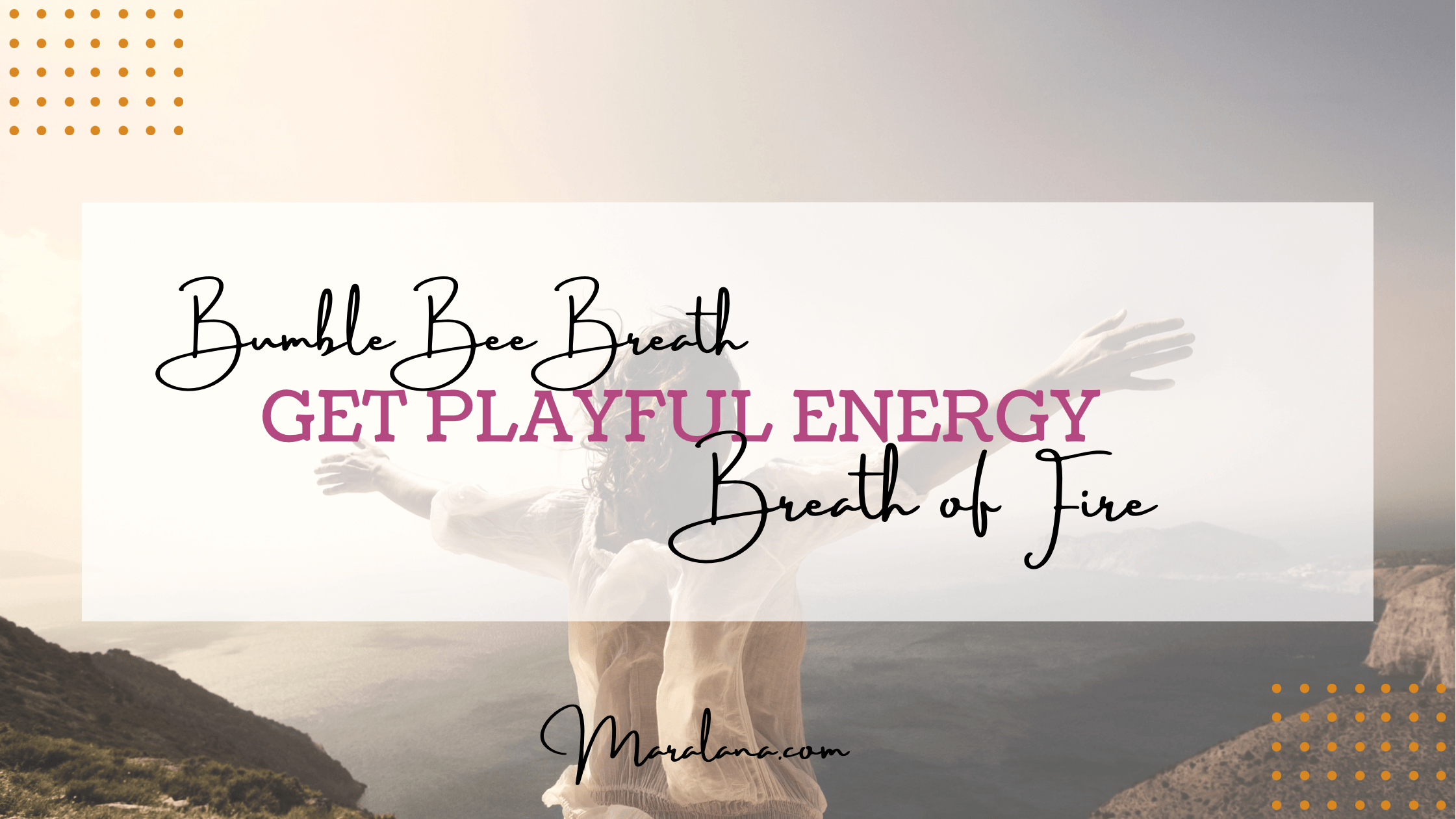Who said breathing has to be boring? This next technique will leave you buzzing with energy and also help tune out distractions. It’s called Bumble Bee (or Brahmari) breath and like it sounds, there’s a special kind of buzz to it.
This breath is fun for all ages, especially kids. But it must be explained and demonstrated beforehand (see the video below ) to understand how to do it properly before you close your eyes and ears (part of the technique). Once you begin bumble bee breath, you are actually engaging in another practice of yoga philosophy, known as sensory withdrawal.
It is said that much of our attention is taken from thing to thing by way of the senses. For example, a smell in the park can lead to a memory which makes us think of a particular person, leading us to feel a certain way and so forth. When the senses are reeled in, a person is better able to focus their awareness on the inner world with full presence.
The benefits of bumble bee breath include clearing the sinuses, strengthening the immune system, and calming feelings of frustration and anxiety. Want to give it a try? Here’s how:
- Establish a smooth, even breath.
- Place your thumbs gently over the ear flaps to close the ear canals to incoming sounds.
- Then, place your fingertips very gently over the eyes.
- Take a deep breath in and breathe out with a humming sound.
- Keep your mouth closed but the teeth parted.
- You may explore this breath for 5-7 rounds, playing with placing your tongue on the roof of the mouth to direct energy upward.
- Notice if a deeper or higher buzzing sound feels right for you.
- Return to a natural breath. What are the effects?
Learn Breath of Fire to Increase Energy

Only dragons breathe fire, right? Wrong! In this technique, the inner fire, known as agni, is stoked, bringing a powerful sensation to both body and mind. Breath of fire is one of the strongest breathing practices used in yoga philosophy and is designed to conjure up energy and activation. Some liken its effects to drinking a strong cup of coffee; while others, to taking a hot shower.
Whatever your reason, you’ll want to make sure this breath is safe for you before giving it a try. It is contraindicated for those who are pregnant, cardiac issues, including high blood pressure, spinal disorders, respiratory infection and vertigo.
As you may have noticed, many of these conditions are also associated with excess heat or warming of the body. Therefore, to add more heat (breath of fire) would be agitating and cause disruption to the system. In yoga, we seek balance. Therefore, if you woke up feeling sluggish or found yourself feeling cool or uninspired, this breath may be the perfect way to spark a fire, activating motivation or whatever warming quality you need to perk up your day.
How to do Breath of Fire:
- Start with a natural, easeful breath.
- Make sure both nostrils are clear (use a tissue if necessary).
- Breathe in naturally through the nose.
- Then, breathe out with a short, abrupt exhale through the nose. During this exhale, you should feel the navel contacting inward as if it is jumping away from the pubic bone.
- Do not hold or close off the breath. Keep air pathways in the nose and throat open. Use the diaphragm muscle to achieve the strong, abrupt exhalation pattern.
- Continue for several rounds (20-30), holding the breath in on the last round.
- After a few seconds, gently release the breath.
- Notice how you feel. If more energy is desired, repeat for another cycle.
Breathing practices, like this one, not only help optimize the respiratory system by toning the breathing muscles and increasing lung capacity; they help create peace of mind.
The presence that is cultivated by breath awareness is praised in mindfulness practices, breathing meditation, flow psychology and more. Academic and athletic performance is enhanced by way of the breath and its connection to the body and mind. Through yoga techniques and skillful, habitual practice, one can push the limits of what they thought possible, getting more and more comfortable with the uncomfortable; thus, adapting more resilience and vigor in life.
From breatharians (a subculture of people claiming to survive on breath alone- no food) to ancient outlooks on longevity (peoples who say that the number of breaths we have is predetermined at our time of birth), to those of us just trying to optimize our experience of life, it is certainly important to make each breath count!
Namasté!

